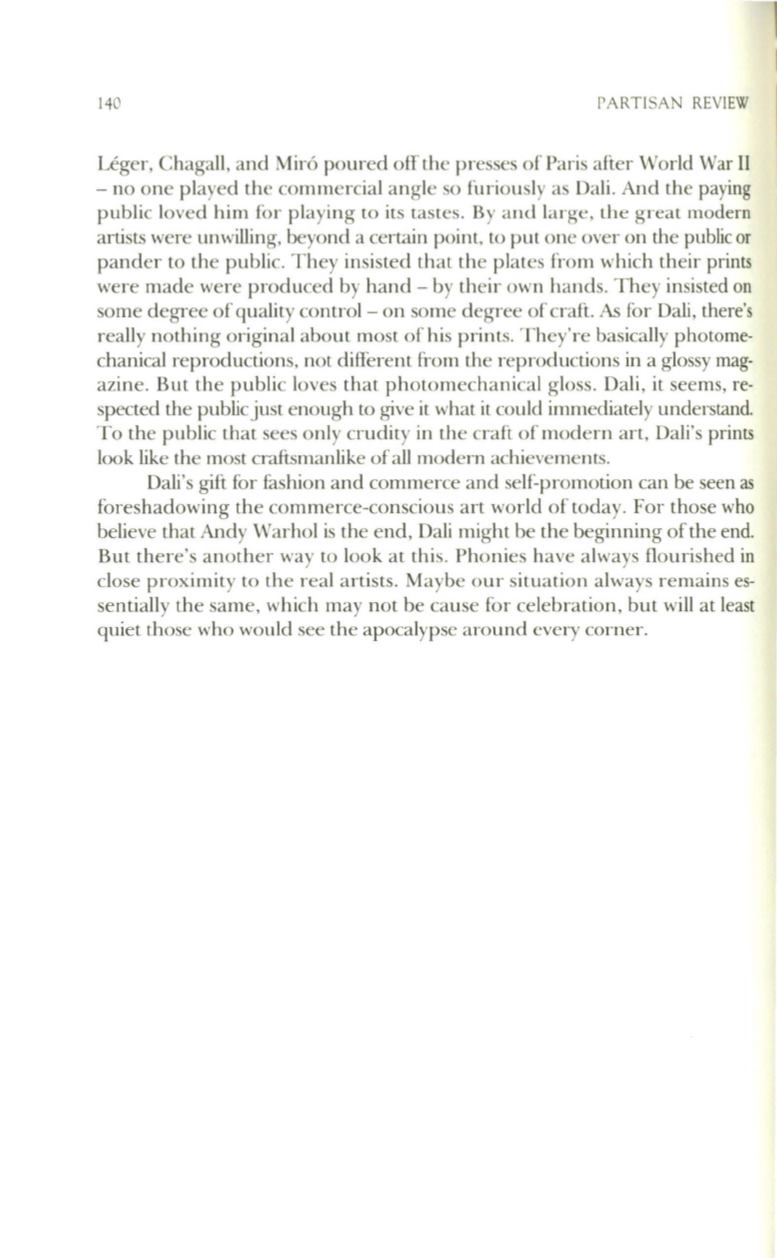
140
PARTISAN REVIEW
Leger, Chaga!l, and Mir6 poured off the presses of Paris after World War II
- no one played the commercial angle so furiously as Dali. And the paying
public loved him for playing
to
its tastes. By and large, the great modern
artists were unwilling, beyond a certain point, to put one over on the public or
pander to the public. They insisted that the plates from which their prints
were made were produced by hand - by their own hands. They insisted on
some degree of quality control - on some degree of craft.
As
for Da!i, there's
really nothing original about most of his prints. They're basically photome–
chanica! reproductions, not different from the reproductions in a glossy mag–
azine. But the public loves that photomechanical gloss. Dali, it seems, re–
spected the public just enough to give it what it could immediately understand.
To the public that sees only crudity in the craft of modern art, Dali's prints
look like the most crafumanlike of
all
modern achievements.
Dali's gift for fashion and commerce and self-promotion can be seen as
foreshadowing the commerce-conscious art world of today. For those who
believe that Andy Warhol is the end, Dali might be the beginning of the end.
But there's another way to look at this. Phonies have always flourished in
close proximity to the real artists. Maybe our situation always remains es–
sentially the same, which may not be cause for ce lebration, but will at least
quiet those who would see the apocalypsc around cvcl-y corner.


